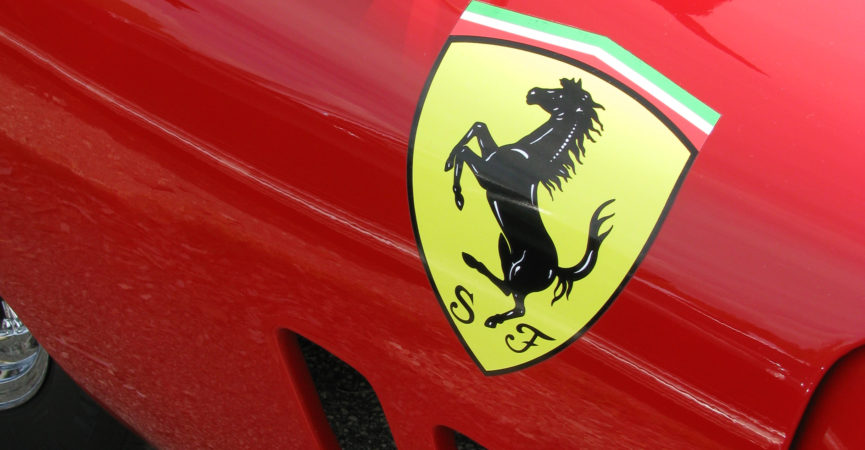
Ten Classic Ferraris More Beautiful Than The 250 GTO
Look, I totally get it. I completely understand why the Ferrari 250 GTO is what it is. First of all, across the automotive stratosphere, Ferrari is absolutely the brightest star of the bunch. When you think of brands that exist on the global stage as the golden standard for all others to be judged from any industry, Ferrari is part of that conversation with anybody, anywhere, every single time. Couple that with the sheer fact that the 250 GTO is largely considered the ultimate halo car of what is really the automobiles most important time period and the evidence continues to mount. Furthermore, factor in that they were more or less exclusively owned and raced by only the best, most influential names of the era, due to the fact they were not only eye wateringly expensive, but because buyers also had to be handpicked by Il Commendatore himself (with assistance from Luigi Chinetti) and the argument continues in its validity past the point of dissent. The Ferrari 250 GTO is for now (we see you McLaren F1), the most important collector car in the world and I don’t think anybody is disputing it.
Of course, this fact cannot be argued from a standpoint of value either. Absolutely nothing of any other prominence, origin or epoch comes close to overshadowing the GTO at sale. Unless you are totally oblivious to cable or local news, or virtually any social media feed of any kind you are certainly aware by now that GTO chassis number 4153 just rang the bell at an exorbitant $70,000,000 (yes, million). It seems like only yesterday that numbers in the high 30’s, and then the mid 50’s seemed as though they would be impossible to eclipse, and that they couldn’t possibly go any higher (could they?). Yet alas, here we are and the general rule of thought now, is that there are clearly no longer any more rules.
Like I said, it does make sense to me why, from every conceivable standpoint, the 250 GTO is the top billed superstar of the collector car marketplace. Where I get lost and what I don’t understand (and where I’m likely to start getting hate mail), resides with the fact that past a certain point, these cars become no different than Picassos, Rembrandts or Pollocks. Primarily designated to sit in museum like settings, in highly sophisticated personal collections and office foyers, art at this altitude is supposed to not only be thought provoking, undisputed and exclusive, but it is also supposed to be beautiful. This for me, is where the 250 GTO bobbles the ball.
The simple fact is, I have never found the 250 GTO to be particularly enchanting to the eye. The grill is weird and squinty, the fenders and the nose flair awkwardly together in a bucktooth like fashion, from the rear it appears vacant and insubstantial and (although most assuredly functional) the rear vents connect everything together in an oversized and cartoonish manner. Most annoying of all, is the way the front half and back half of the car exist together so disproportionately. The mass of the back and the flatter, more diminutively thick front, separated by the block like rake of the windshield has to me, always looked unbalanced and inequitable. The later versions were substantially better with their notch rear windows, but basically, it’s still the automotive version of my 7th grade social studies teacher, and I didn’t find much about her appearance all that inspiring either (plus she was mean as hell…. another trait probably also shared with the GTO).
Anyway, here are ten Ferraris that check that one and only box where the 250 GTO comes up short……….
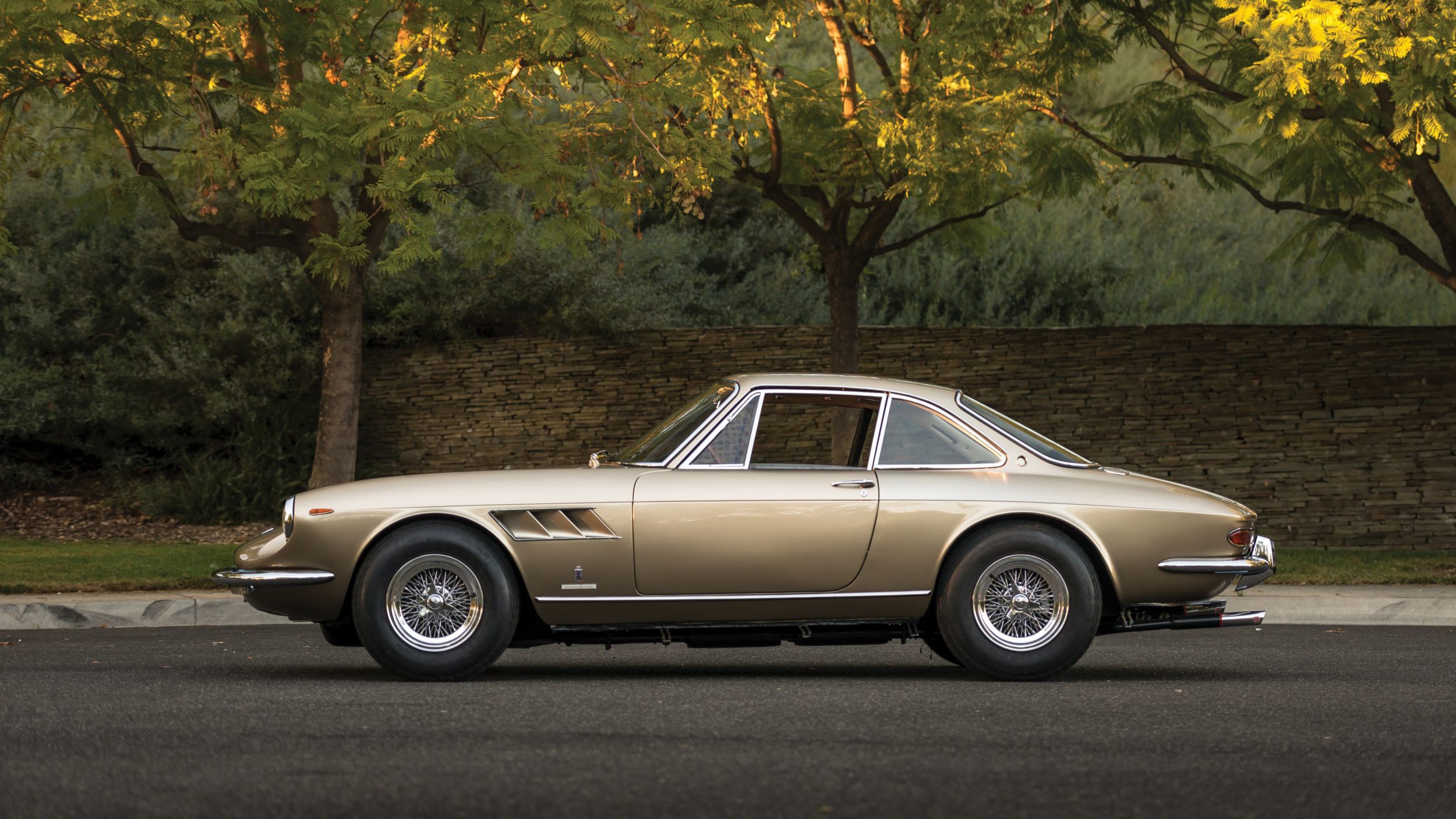
10. 1966-1968 Ferrari 330 GTC
First introduced in 1966, the two-seat Ferrari GTC coupe was beautifully designed by Pininfarina and was renowned for not only being spacious, but also powerful. More 275 GTB than 330 GT, the GTC was equipped with a 300 horsepower 4.0-liter V12, a short 94.5 inch wheelbase and independent rear suspension. The GTC’s steering was notably easy, the engine highly capable and its general on road refinement make it one of the most usable and livable Ferraris of all time. Considered by many to be amongst the finest cars of this type of the era, apart from their obvious willowy lines, the 330 GTC offers seamless, sophisticated power, fabulous amenities, great visibility, and a wonderful symphony of cylinders available at any speed. Overall, in the two years offered, approximately 600 examples were produced.
Why it’s here: Not only are these stunning machines atheistically, but they are also REALLY nice driving cars. Each version is excellent within it’s respective category, but when it comes to strictly outward appearances alone, one component separates the GTC from its counterparts, the for more exclusive GTS and the more complete, fuller looking GT 2+2. The way that sweeping, chrome encapsulated rear window on the GTC adjoins the roof to the slightly convex curvature of the truck and off the back of the car is magical. It is simply one of the most graceful lines ever demonstrated on an automobile of any kind and you only get it that way on the GTC. Side note: When I was a little kid, I used to follow my Grandfather around to the various specialty garages around Denver where he had acquaintances and I used to see these quite a bit. I always remarked to myself how ugly I thought these were, and how I thought they were “stupid”. Then I would beeline towards the nearest 328, Porsche 930 or C4 Corvette. Not that I still don’t adore those cars, but clearly, I was delusional. I mean look at this thing! It’s absolutely alluring! I guess you do get smarter as you get older after all……
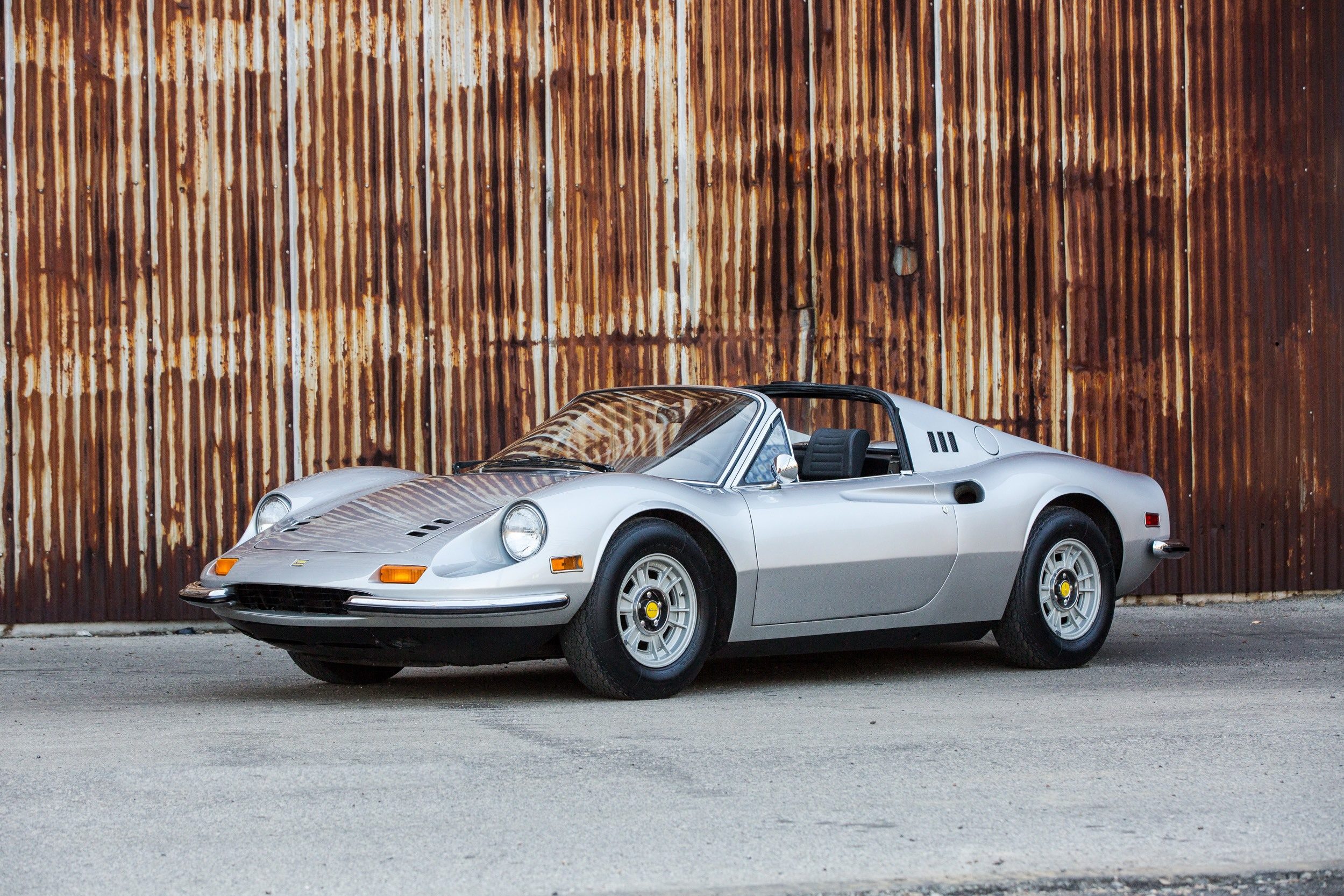
9. 1972-1974 Ferrari Dino 246 GTS
At 3,761 produced (1,274 GTS versions) during its run, the Dino 246 is Ferrari’s first attempt at a semi mass manufactured vehicle. It is lauded by many for its intrinsic driving qualities and groundbreaking design. Introduced in the spring of 1972 at the Geneva Show, the GTS was virtually identical to its hardtop sibling, the 246 GT, sans the removable roof panel, and the rear quarter window delete, which was replaced by a plain metal sail panel and three rectangular cabin exhaust air slots. The engine, although hearty in performance and exhilarating from an auditory standpoint, was and continues to be a source of controversy, as it checks in with too few cylinders than what was deemed at the time to be acceptable to purists. No matter, it’s difficult to discount the charms its operatic 2.4-liter V6, which produced a more than adequate 195 horsepower. Endearing, entertaining and euphoric, it’s basically impossible to not have a blast in a Dino GTS. As such, it is likely the most cheerful car Ferrari has ever produced.
Why it’s here: Shunned for years as “not a real Ferrari”, it’s hard to find a car more delightful than a Dino GTS. From the standpoint of the eyes, the ears and the soul, the Dino easily fires on just as many cylinders as its bigger cousins. Louvers, scoops and style for miles (especially with Daytona seats – I’m impartial on “flairs”, but you gotta have the “chairs”), the design of the Dino has set the standard for roadgoing Ferraris through the 1970’s, past the 80’s and all the way until today (tell me you can’t feel its impact on the 488…). Despite its badging, it’s not just one of the most influential Ferraris ever, but also one of the most beautiful. From front to back, the profile of the Dino flows like no other since the 330 P4 (which isn’t on this list but probably should be). Sure, the hardtop GT connects things more thoroughly, but nothing is more fun than a “best of both worlds” targa type roof. This is why in my book, the GTS will always be the best. Beauty isn’t just what you see when you look at the car. It’s also what you see when you look out of the car, and the view from inside of a 246 GTS is inspiring, no matter which direction you’re looking.
 8. 1984-1991 Ferrari Testarossa Spider (Conversions Only)
8. 1984-1991 Ferrari Testarossa Spider (Conversions Only)
Probably considered Ferrari’s most recognizable top line car of the 1980’s, the Testarossa is a 12-cylinder, hard top, mid-engine sports car, introduced in 1984 as the successor to the Berlinetta Boxer. Should Ferrari have made a convertible? Yup! Did they? Nope! Well, at least not really….. Ferrari constructed a single Testarossa Spider, serial number 62897, in 1986 as tribute to then Fiat chairman Gianni Agnelli’s 20 years of chairmanship of the company. Unfortunately, this car was ugly and dumb, featuring a bunch of stupid looking louvers all over the rear bonnet and an awkward looking blue stripe across the bottom. To be fair, 62897 did have a Valeo transmission installed which was usable as both an automatic or a standard 5-speed manual with the push of a button. This was most certainly a technology ahead of its time, which by all accounts is actually pretty cool, but I digress…… Many customers requested their own Testarossa Spider (assumedly not looking ugly and dumb), but Ferrari declined every single one of them for spatial and structural challenges that would be difficult to resolve. As a result, a variety of coachbuilders stepped up to the plate to make unofficial Spider conversions on special consumer requests. These cars were largely no different mechanically than the normal Testarossas available. The only major modifications, other than being a convertible (the extra weight from supports and so on involved), were that the Spider’s front window and door windows were both shorter than those of the normal car.
Why it’s here: Let’s be real. I probably should have considered elements of pure design and put the rolling architectural CAD drawing on wheels otherwise known as the 512 Boxer or the ultra-sleek, yet ultra muscular, more proportionally congruent 288 GTO here, but you knew there had to be a wildcard here somewhere, right? Fact is, lusting after Testarossa Spider conversions remains one of my earliest automotive memories. I think it was an article in a Road and Track given to me by my uncle that started this obsession, but frankly its been going on for so long I can’t say for sure. Let’s just play with round numbers here and say I’ve been head over heels in love with these for basically my entire life. What’s not to love? When gazing down the profile of the Spider, I endlessly hear David Lee Roth expressing his preference for the line that goes up the back of the girls stockings (and yes Dave, I’ve always liked those kind of high heels too). Point is, everybody wants one and I want one too. The biggest improvement on Spider version is that glorious ramp up the rear wheel and the way it flows together with the box on top of the bonnet. This is only made possible in this manner by the absence of the standard Testarossa’s rear buttresses. Combine that with the chop on the windshield and you have pure artistry in motion and it’s why its one of the greatest designs Ferrari has ever seen.
Story time: The car pictured, Michael Jackson’s Straman built car from that 1987 Pepsi Super Bowl commercial, serves as the single biggest disappointment I ever experienced from the time I was working full time for an auction company. When I found out it was scheduled to run a few years back, I was ECSACTIC. Although a late entry, I was still able to do a little pre-auction work with it which only served to make the anticipation more severe. Fast forward to the week of the event and we have no Straman. Vehicle check in comes and goes and we have no Straman. At this point I’m bouncing around the feature lot every 15 minutes, like a puppy chasing a tennis ball, bothering all the Vehicle Opps leads with constant chants of “Is it here? Where is it? When is it getting here? The second you see it call me!”. Preview day comes and goes and the sinking reality begins to set in. it’s not coming.
I woke up opening morning in a generally bad mood and headed from the hotel to the event site not expecting much (or at least a Testarossa Spider) from the day. As I parked my rental car, checked in with security and began my morning inventory walk, the vehicle check in gates opened and I knew exactly what I was getting ready to see. It was finally here. Excitement almost immediately turned to disappointment as what rolled around the corner on a beaten up old flatbed, was quite clearly miles away from a car that was in any kind of condition to cross the block. Uncovered, top down and filthy, the Testarossa Spider looked more like a bombed out than freeway in Afghanistan than a beloved, auction ready collectible and I pretty much immediately saw the writing on the wall. The driver bounced out of the cab of the truck doing everything in his power to justify the circumstances he had put this car, his clients and us in, but it was painfully clear who had dropped the ball. In addition to being late and delivering the car in horrible nick, he had also managed to misplace the paperwork. This meant no “sold, sold, sold!”. Although I did get a quick tour around the car, unfortunately I never got to see it under the big stage lights and my best memory will (for now) have to reside with its sad face staring back at me from behind the fence in “car jail”. Truly a sad, sad series of days.
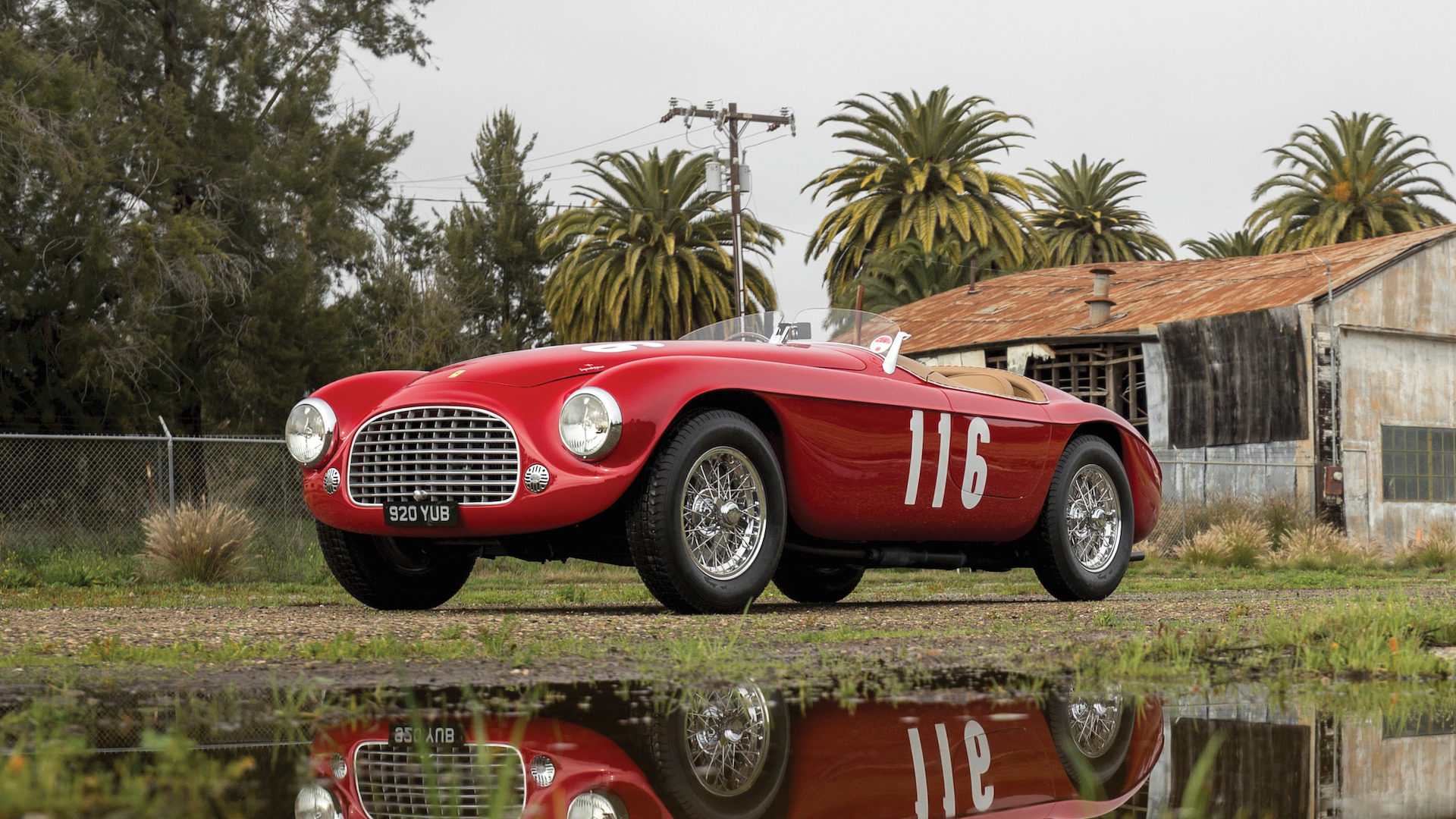 7. 1948-1951 Ferrari 166 MM
7. 1948-1951 Ferrari 166 MM
First making its debut at the Turin Show in 1948, the 166 MM Barchetta was the car that established Ferrari and is largely credited as the vehicle that led to the creation of the Ferrari legend. A road car as well as a race car, the design was totally revolutionary in its day. Although very capable in touring form, the 166 MM was ultimately created to race. Designed for long distance competition, the 166 MM took its name from one of the world’s most famous road races, the Mille Miglia. Its coachwork was built by Touring using the “Superlight” method and it was both extremely light and extremely dynamic, while still maintaining significant structural stiffness. The 166 MM was very successful on the track, finishing 1 and 2 in the 1949 Mille Miglia and later checking a win at the 24 hours of Lemans. The Barchetta or “small boat” styling of the 166 MM had a tremendous influence on automotive design, later serving as the inspiration for legendary automobiles like AC’s Ace and Cobra, the Anderloni-designed Alfa Romeo Disco Volante, as well as countless other sports cars.
Why it’s here: I love Barchetta style cars and this, with maybe the exception of some of the Tojeiro designs, is the best of the bunch. I have a tremendous appreciation for compact, efficient, minimalist design and the 166’s Colombo designed 2.0-liter V12 is an absolute masterpiece. Additionally, its hard to argue with the delicate lines of the 166 series cars. The large open-mouthed grill and slightly protruding circular headlights give way to the incredible curves that run between the headlights and the grill, down the doors and back, following the trunk lines and off the rear of the car and this still serves as one of the most inspiring aerodynamic channels of all time. Small, lightweight and timeless, the 166 MM was a clear trendsetter who’s presence would inspire a generation of brilliant designers to create amazing things for years to come.
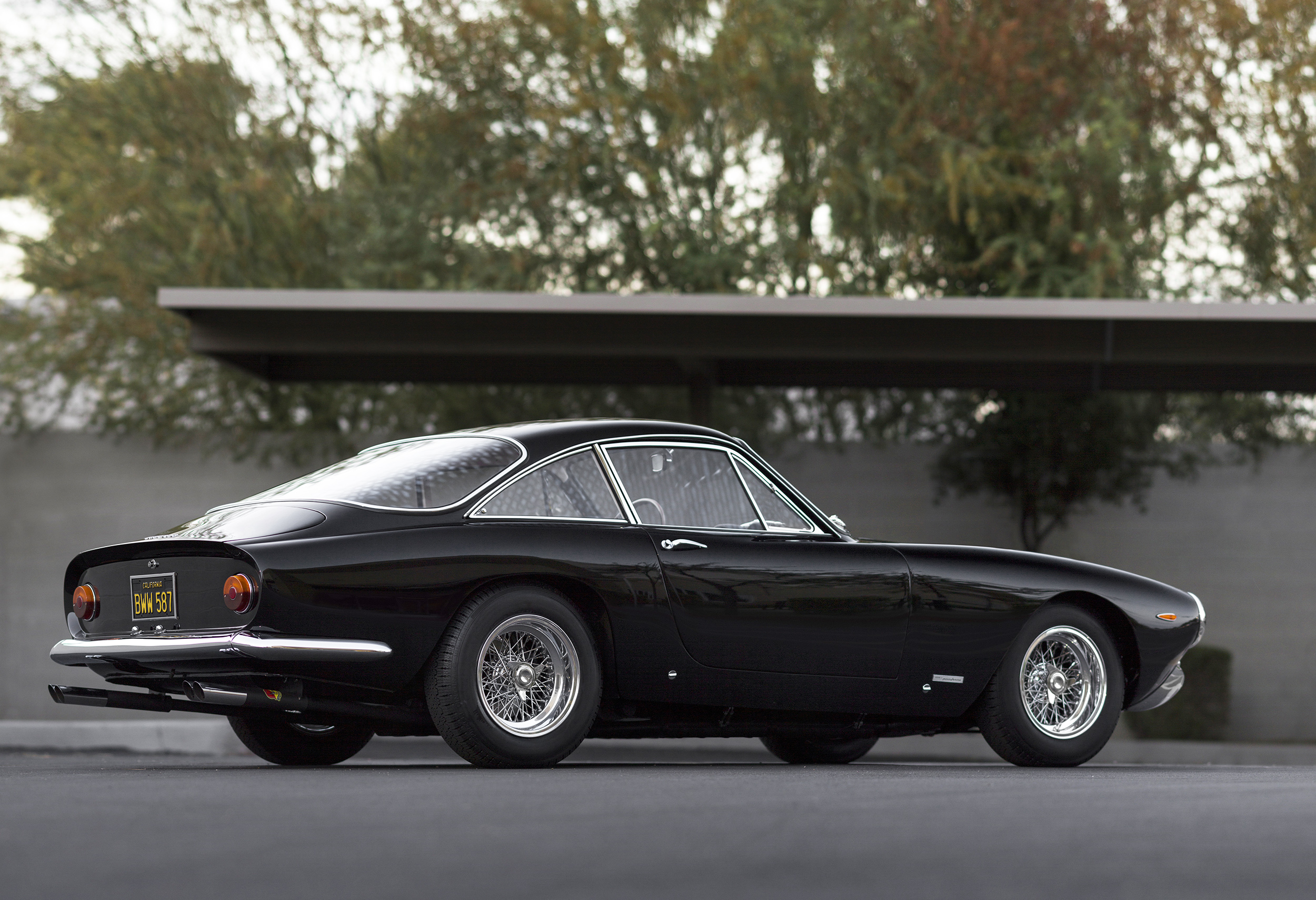 6. 1963-1964 Ferrari 250 GT/L Lusso
6. 1963-1964 Ferrari 250 GT/L Lusso
The 250 GT/L Lusso, made its debut at the 1962 Paris Salon, and was the last all road going model in the 250 GT series. Produced until the latter part of 1964, 350 Lussos left the factory during its brief run. As was the standard, the body styling was by Pininfarina and production models were courtesy of Scaglietti. Stylistically, the Lusso won immediate praise. It featured a front-end design with a wide and low egg crate grille similar to the much adored 250 GT ‘SWB’ Berlinetta and had a three-piece bumper arrangement, with a horizontal bar below the grille. A small vertical bumperette cradled the side/turn light on each front wing, with inbuilt circular driving lights between them and the grille. The front wing line curved over the wheel arches to fall gently through the door panel, with the rear wing line running from the door shut line, skirting the base of the rear quarter glass, before falling in a long curve into the Kamm tail panel, which had a shallow aerodynamic lip to its upper edge. The interior however, is where the Lusso really shines. Draped from door to door in leather, the Lusso featured a pair of deep bucket seats, behind which was a luggage platform with leather straps and a simply breath taking diamond quilted cover panel fitted to the top of the parcel shelf. The instrument layout was unusual in that the speedometer and rev counter were housed in a pair of large circular binnacles that protruded from the top center of the dashboard and were angled towards the driver. Supplementary gauges stared back at the driver in a horizontal panel that sat directly in front of the steering wheel. The GT/L was powered by a highly respectable short block Colombo V12.
Why it’s here: The GT/L Lusso is the most elegant Ferrari ever produced. End of story. Lusso means luxury in Italian and clearly this car delivers loads of that. Sure, the outside, engine bay and everything else on 250 cars simply drip with sensuality, but when it comes to interior appearance, nothing comes close to a Lusso. The standard 250 dashboard presentation is certainly stunning, but the reworked gauge locations, combined with the incredible, eye popping cross stitching demonstrated through the interior puts this car in a class by itself. Not overlooking the outside, this car is basically Elizabeth Taylor on wheels. It possesses a classic “old Hollywood glamour” kind of vibe that very few others can match. The world of stage and screen recognized this as well. Scores of entertainment icons have had connections with GT/L’s over the years (including the one pictured), but none more noted than Steve McQueen. Frankly, if the king of cool had one, you know it’s special and that really defines what this car is. Everything about Lussos are special, and that’s what cars like this are ultimately most about.
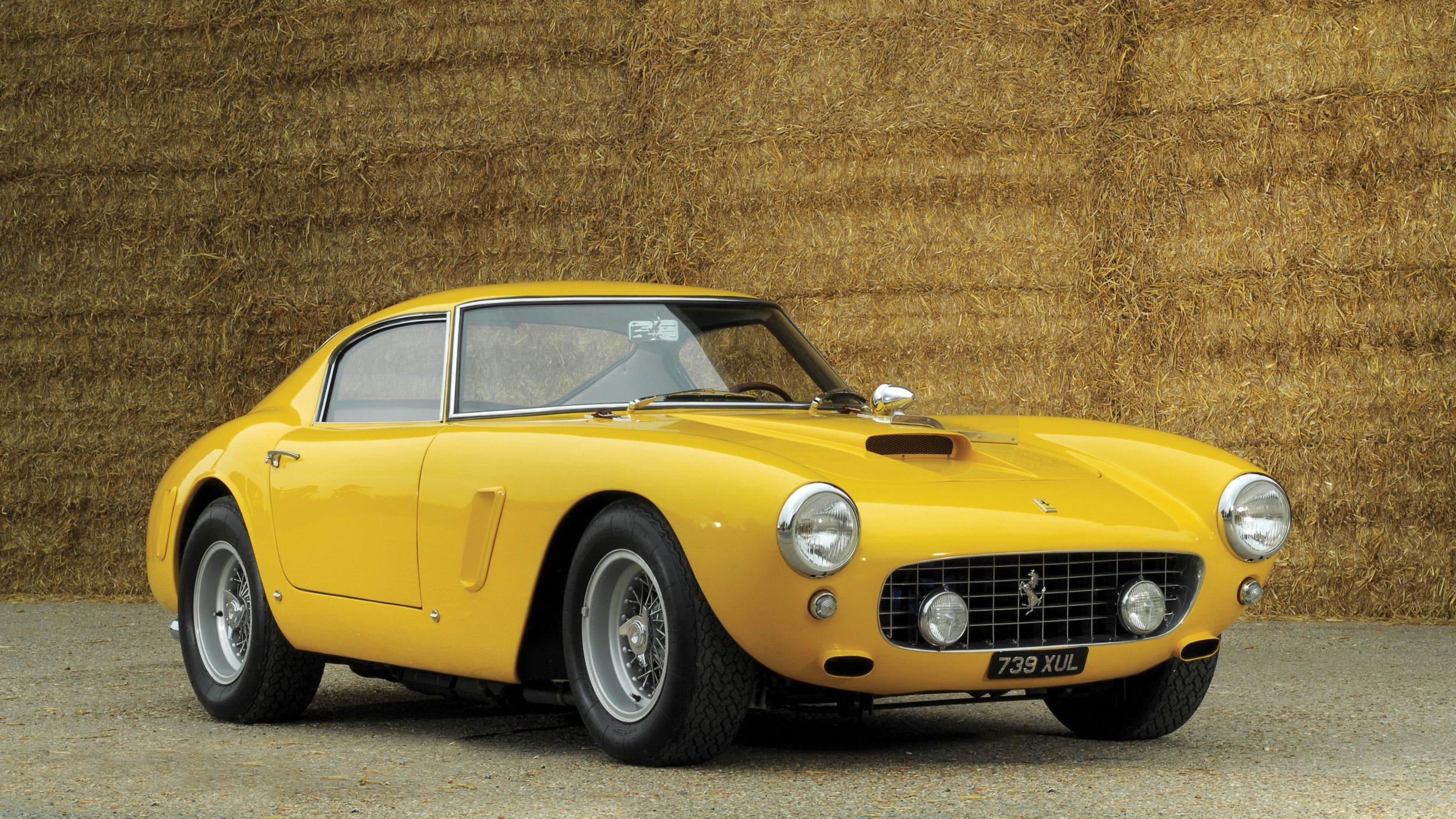 5. 1959-1962 Ferrari 250 GT Berlinetta SWB
5. 1959-1962 Ferrari 250 GT Berlinetta SWB
Considered by Sergio Pininfarina to be “the first of three quantum leaps in design with Ferrari,” the 250 SWB was the one of the last production, hand-built Ferraris. Debuting at 1959’s Paris Auto Show, the “SWB” (or short wheelbase) refers to its more diminutive 2400mm wheelbase, which was nearly 200 mm shorter than the previous 250 GT models. As they were literally constructed by men with hammers, virtually no two SWBs were really completely alike. This included not only exterior features, but also interiors, and engine configurations. Some cars were steel, but some were aluminium. The latter received higher compression engines with larger carburetors and offered a significantly more sporting experience. For the serious enthusiast, hot rodded SEFAC examples could be had, which featured ultra-thin lightweight-aluminum panels, stripped-out interiors, and hopped-up V-12s with larger intake valves, tuned exhaust systems, and oxygen thirsty Weber carbs. SWBs have a reputation of being very easy to drive and very dependable on road. As such, by many, the 250 GT SWB is considered to not only be one of the most ravishing, but one of the best preforming Grand Touring Ferraris ever made.
Why it’s here: A few years ago, I did a radio interview, where myself and the host were discussing little things we appreciated on old cars. He brought up a car and I brought up things like hidden tool marks, autographs under trunk mats, little drawings hidden behind fenders and how much I appreciated seeing things like that on cars. I mentioned how they painted mental pictures of old Italian gentlemen sitting alone in garages with hammers slaving away to create something truly amazing and how we should never forget those guys. Unfortunately, the car the host eluded to was hardly hand built, nor was it manufactured in Italy, so I looked like an idiot (I barely slept nearing auction time… sue me). While I wasn’t wrong on the overall scope of my horribly flawed commentary, one of the cars I was thinking about was the 250 GT SWB. Not only is the SWB possibly the most proportionally faultless Ferraris ever constructed, but the fact there not only no flat surfaces anywhere, but also the varying degree of the curvature throughout makes it possibly the most artistic as well. The skill focus and precision it must have taken to build something like a 250 GT SWB is truly inspiring and its why it will always be one of the most beautiful cars of all time.
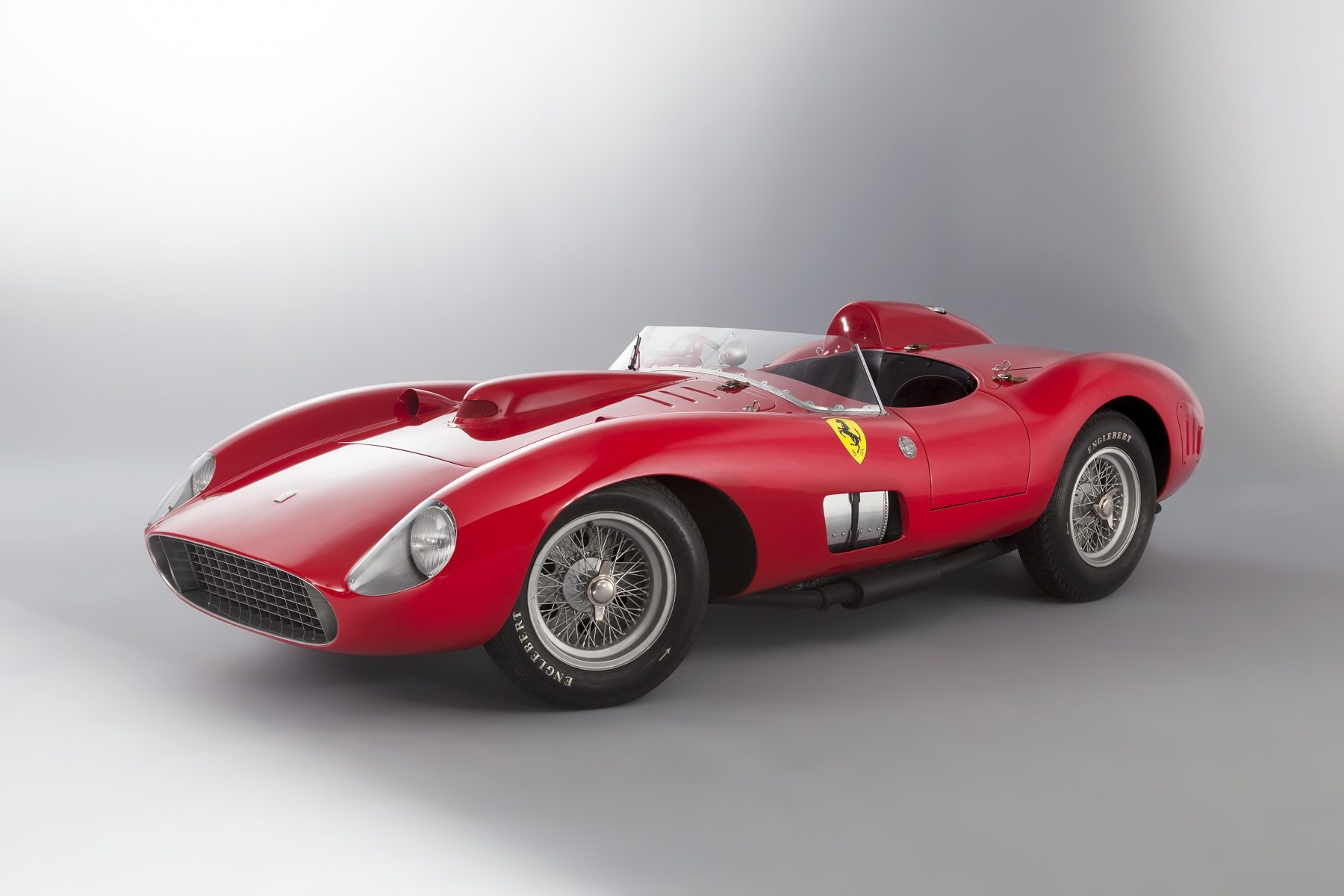 4. 1957 Ferrari 335 S Spider Scaglietti
4. 1957 Ferrari 335 S Spider Scaglietti
The Ferrari 335 S was a very limited sports racer produced by Ferrari in 1957. With only four cars sculpted in total, it served as an evolution of the 315 S. It featured a 246 cubic inch V12 engine and a maximum power of 390 horsepower. Top speed was a (likely thoroughly terrifying) 190 mph. The car was a direct response to the Maserati 450S which with its 4.5-litre engine was threatening to create problems for the 315 S and 290MM. Explosive speed and heart stopping good looks were unfortunately not what the 335 S has become most known for. The 335 S was involved in an unfortunate accident at the 1957 Mille Miglia, which took the lives of both its drivers as well as nine spectators. As a result, 1957 was the final year for famed race and the 335 S will somewhat forever be remembered as the catalyst for its demise.
Why it’s here: Although somewhat doomed to eternity in the dungeon of the notorious, the fact still remains that the 335 S is the most beautiful sports racing car Ferrari produced during the 1950’s. Some would certainly argue that the 250 Testa Rossa lays claim to this crown, but the reality is, the Testa Rossa has bad angles. The 335 doesn’t. Although the lines are similar, the wide open-mouthed grill attached to the more traditional front end and the fuller front quarters seem more sculpted and less functional and thus more artistic in nature. The 335, is another one of those cars (like most like this created around this time) that from a production standpoint had to be staggering in nature. Like the SWB, there is absolutely no flat surfaces anywhere on this thing and as such, the craftsmanship is nearly inconceivable by comparison to anything made today. With that said, I have to be honest here. I tend to find more visual attachment to the competing Maseratis and UK cars of the era and the more conservative (if you can even call them that) styling of the 335 speaks to me in a similar manner. This is why it’s here and the 250 TR isn’t.
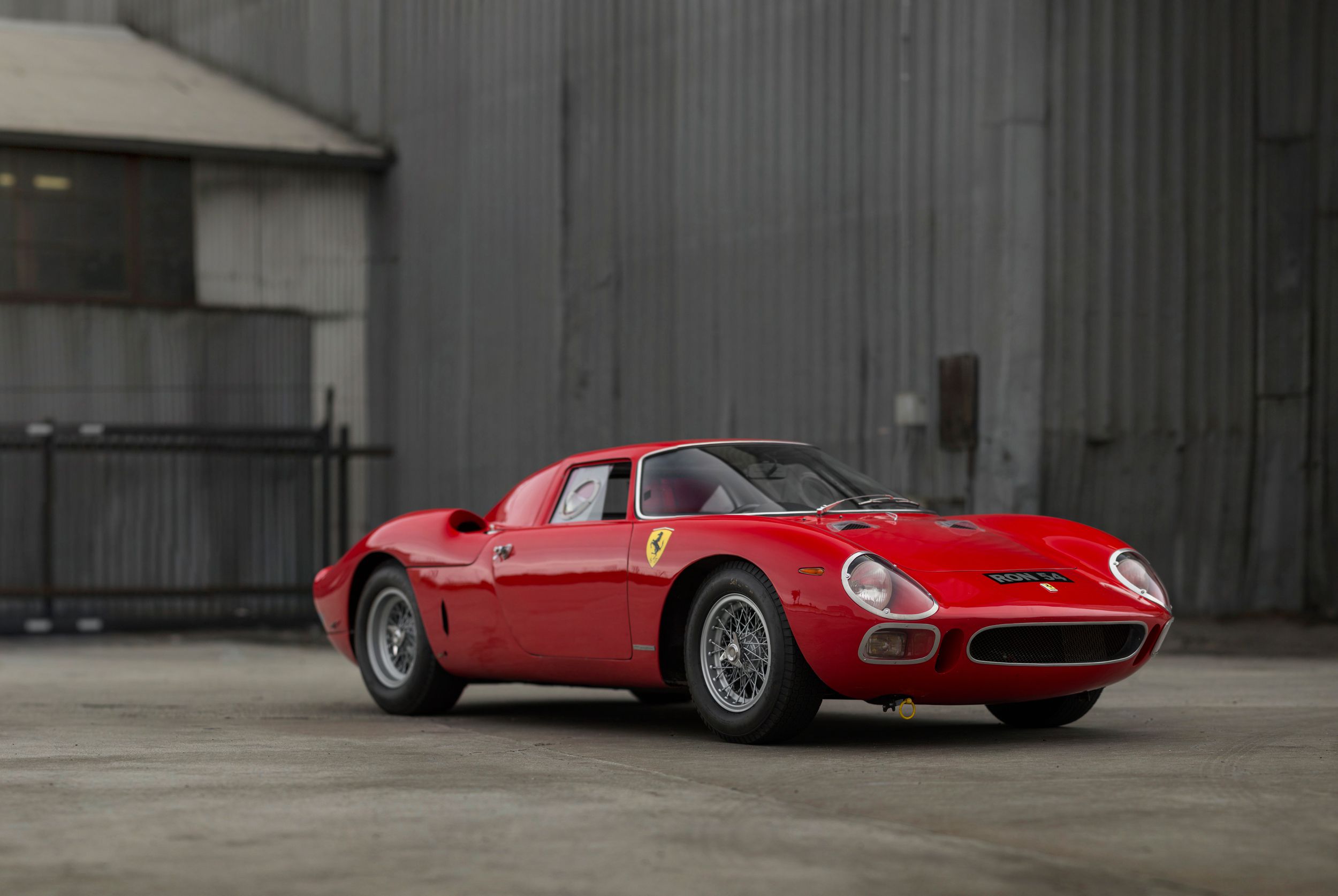
3. 1963-1966 Ferrari 250 LM
Introduced at Paris in November of 1963, the 250 LM was the direct evolution of the 250 P race car and was a saleable mid-engine offering made available to the public. Also successful on the track, a 250 LM was entered by the North American Racing Team in the 1965 24 Hours of Le Mans and was victorious. This remains Ferrari’s last overall victory there. 32 models were built, with all but the first few being powered by 3.3-litre 320 hp engines. A fully independent double wishbone suspension was also specified with rack and pinion steering and four-wheel disc brakes. Ferrari had intended that the 250 LM be homologated for racing as a Group 3 Grand Touring Car, however in April 1964 the FIA refused to do so as Ferrari had built considerably fewer than the required 100 units. Thus, Ferrari was forced to run 250 LM as a Prototype until it was homologated as a Group 4 Sports Car for the 1966 season.
Why it’s here: If you think about the general appearance of supercars today, the LM was so far ahead of its time that it’s insane. I can’t imagine what a flabbergasting experience it must have been to see it driving down the street in 1963. You would have though aliens had landed! As beautiful as the low-slung exterior of the LM is, the interior is nearly equally raw, and thus beautiful in a much more pure and archaic manner. Even the most luxurious road going example is spartan inside at best. Obviously, road use was secondary in initial design and that, in my opinion is the best part of the LM. Race inspired blue seats, disrobed shifter, absent door cards and virtually no creature comforts seem to be the standard of most of the cars I’ve seen, but that’s why they are special (as also seen on certain 250 GTO examples). Case in point, when snooping around the Portola Hotel and Spa in 2014 (you know when and you know where), myself and my party spotted a series of ultra excusive cars, visually blanketed in white, under a row of trees, inside in the hotel lobby. The 250 LM simply shined in this setting and before anybody could say a word, I was standing next to the short white ramp on which it was displayed, with my head in the car basically drooling. Moments later, unbeknownst to me, my party had caught up and was staring at me, all with puzzled expression. “What are you doing? This is Steve McQueen’s 275”, one of them remarked and pointed at the car next to the subject of my focus. I looked up, looked left, looked right, nodded and stick my head back in the LM. You want proof of the captivating nature of the 250 LM, it’s hard to come up with more conspicuous evidence than that.
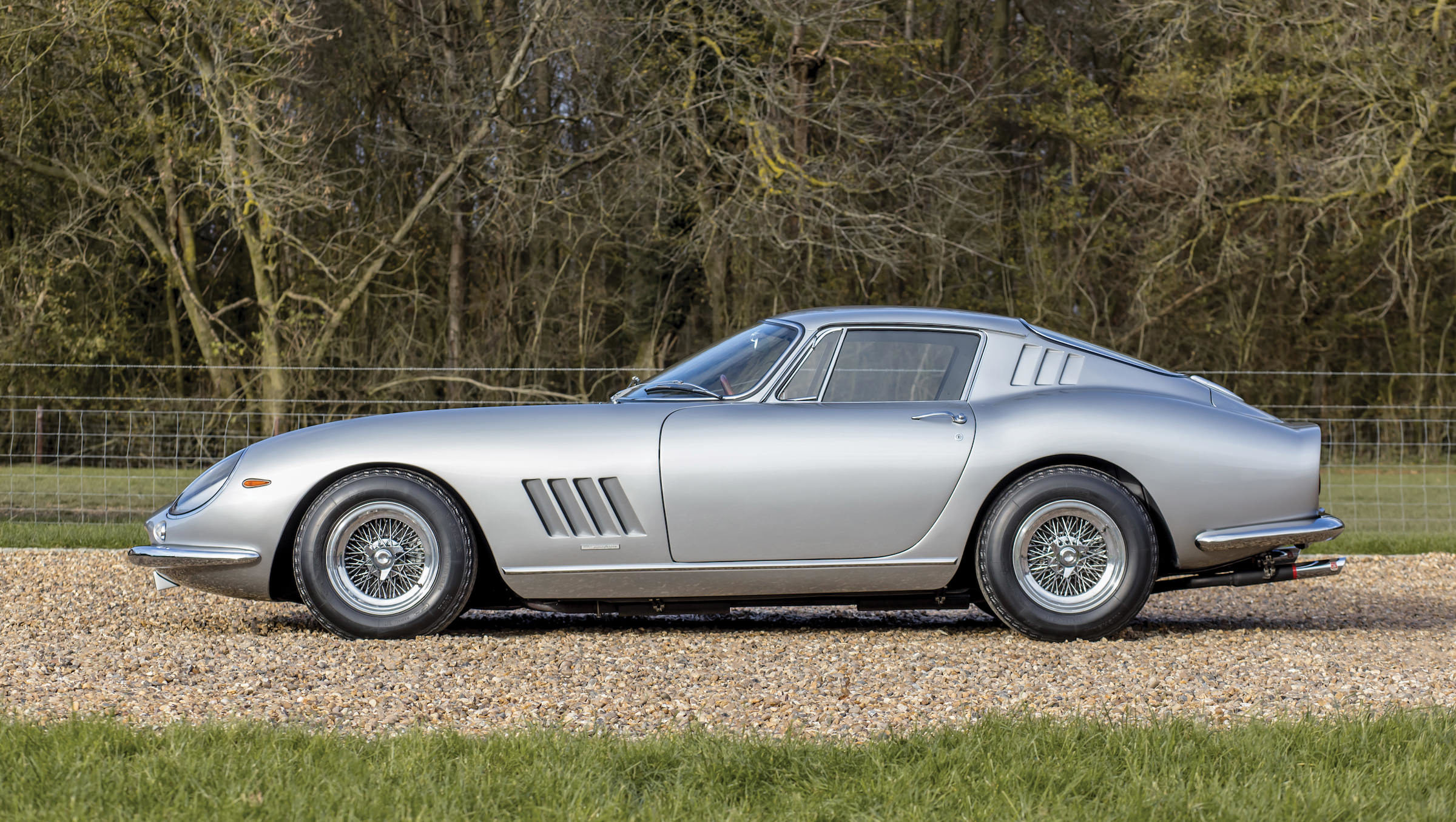 2. 1964-1968 Ferrari 275 GTB
2. 1964-1968 Ferrari 275 GTB
The 275 GTB was a two-seat GT car produced between 1964 and 1968. Featuring a 3.3 liter Colombo 60-degree V-12 engine displacing 275 cc per cylinder and producing 280-300 horsepower, the standard 275 GTB coupe was produced by Scaglietti and was available with 3 or 6 Weber twin-choke carburetors. 4-cam versions were available starting in 1966 and demonstrated updated bodywork and a substantially reworked 300 hp Colombo V12. Overall, a little less than 1000 were produced in the 275 series of cars. However, 80 cars were built with aluminium bodies instead of the standard steel. A Series II version with a longer nose appeared in 1965. The 275 was subject to a series of firsts as it marked the introduction of the transaxle. Also, the GTB/4 was the first Ferrari to not be offered with wire wheels.
Why it’s here: “How come you picked the GTB and not the far more rare and valuable GTS/4 NART?” I can hear it now…… While simply stunning in either variant, the GTB is here largely for the same reason that the 330 GTC appears instead of the GTS. The way the tip of the nose flows over the sculpted hood, directly across its perfectly proportioned roofline, above the rear quarter vets, up and over the spoiler, straight down off the tail, on to the gorgeous chrome bumper and off the protruding ANSA exhaust is simply one of the most exhilarating lines in automotive history and again, it’s something you don’t get on the NART. No matter the version, there is styling absolutely everywhere on this car and as such, every inch oozes with sex appeal. Enzo Ferrari famously claimed that the Jaguar E-type was the most beautiful car he had ever seen. Although the GTO was allegedly designed as a response, as far as road going cars, this much more accurately seems to be the answer for that. With its long nose, covered headlights and open, pouty grill, the 275 GTB is the E-type as reimagined by Pininfarina and the result is marvelous.
 1. 1957-1962 Ferrari 250 GT California Spyder
1. 1957-1962 Ferrari 250 GT California Spyder
Thanks to a proven reputation as a strong motorsports contender, and the work of North American importer Luigi Chinetti, the United States became an ever increasingly important market for Ferrari. John Von Neumann, Ferrari’s West Coast representative, theorized that the golden state was critical to the brands prestige and the idea of a model targeted therein was born. Chinetti welcomed the suggestion and helped to convince Enzo Ferrari that it was a good idea. He agreed, and Scaglietti was therefore given reins, to create the 250 GT California. 106 were constructed in total, 9 featuring aluminium bodies. Two distinct versions of the California left the Ferrari’s stables: the ‘LWB’ (long wheelbase) between 1958 and 1960, and the ‘SWB’ (short wheelbase) from 1960 to 1962. A removable hard-top was available for both generations. Although equipped with a variety of versions, all examples were armed with Ferrari’s legendary 3-liter V-12 engine. Some examples were provided with covered headlights, and others with open units, and with the exception of a few 1959 models, the choice was in the hands of the client. In addition to being jaw dropping in appearance, the 250 California also fared well in competition, placing fifth overall at Le Mans in 1959 and finishing several national races in the USA during the 1959 and 1960 seasons.
Why it’s here: Ummmmmm….. look at it? Wheelbase irrelevant, it’s the most beautiful car in the world!
What else do you need?
/end

Darin Roberge is President and CEO of Motorwerks Marketing and is a Marketing and Media Consultant in the Specialty Automotive and Live Events industries. Darin has been named a Business Trendsetter by Arizona Foothills Magazine, is a two-time nominee to Phoenix Business Journal’s 40 Under 40 list and is one of Sports Car Market Magazine’s 40 Under 40 for 2017. Learn more about Darin at www.DarinRoberge.com
